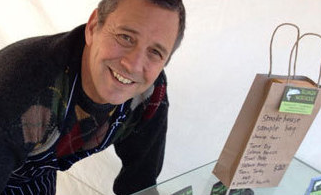A smokehouse owner has told how he stopped using tuna in favour of salmon because it has a far more ‘broader appeal’.
Matt Bolton, who runs the Bellingen Smokehouse near Brisbane, Australia, revealed how when he bought the business 15 years ago, tuna was at the heart of its offering, but he decided on a new trajectory.
He said: “When we bought it, its focus was cold smoking tuna, and we took it in the direction of salmon. We don’t produce a lot of product, in our peak season, our summer, we might be processing about 2 and a half tonnes of salmon a month. That’s product in, not product out.

“We needed a product with broad appeal, but we also needed a product that were going to differentiate us from the other salmon smokehouses. We’re right behind the King Salmon which we get from New Zealand. We had to buy a product that we could sell lots of. The tuna didn’t have broad appeal to make it genuinely viable.”
Farmed salmon
Mr Bolton told Salmon Business that he only uses farmed salmon, and that the quality of the product has been improved since he bought the business.
He said: “We’ve gone from cold smoking cheap fish to hot smoking and cold smoking very expensive fish. The salmon is farmed. I won’t use wild caught fish. I really believe the oceans need a break, for lots of reasons, for emotional, economic and environmental reasons, I believe aquaculture is the way of the future. I won’t use any wild caught fish at all.”
And he says Australia is currently going through a discussion about salmon. The business is small and so only turns over around AU$250,000 per year. But he reckons if he was in London he’d be doing a lot better than what he is doing now.
He said: “The consumer is becoming aware that they have other options other than smoked salmon in Tasmania or Norway. But now consumers have become aware of other producers in the market.
“Smokehouses which are a larger operation than myself are getting picked up by gourmet, small-to-medium growth chains. The issue in Australia for any smokehouse is the size of the market. If I was doing what I was doing in London, I’d be doing very well, I reckon.”

Smoking process
So how does the smoking process work?
“My approach is 1950s’ factory,” he told Salmon Business.
“It’s a pure salt cure, and the King Salmon requires a longer salting than atlantic. So it’s a longer salting process than we’d use for atlanic. I don’t use sugar in our cures. I don’t use any rums or anything like that. In the brines. Turning on the side of the fillet, we’re looking at 14 to 20 hours. And then a short brine. And then the smoking is about 6 hours: two hours of drying beforehand, and then a little burst of heat to bring out the colouring.”
Main aim
Mr Bolton says the main aim of the business is to keep producing an ‘awesome’ product. That’s central to what he produces.
He said: “Consistency is the market champion. I’ve just got to continue to produce excellent products.
“I would see my trajectory of one of being slow growth and one I’m locked into. Unless anyone is inspired by my fish, then I could reach an audience who really appreciates it. It’s made completely traditional. For me, it’s about getting in touch with a broader market. We don’t have a depth of history as say the UK or Europe.”


